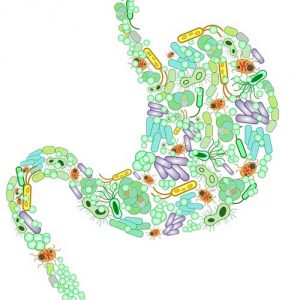
Background
A unique and diverse array of inter-specific relationships can be found within the microbiome of the human gut. Due to the constant flow of microbe-carrying nutrients through it, the gut is subject to a high risk of foreign invaders. Fortunately the immune system, as well as the digestive tract (with the help of its residential microbes), have processes to rid themselves of the pathogenic strains (Ichinohe et al, 2011). These bodily systems provide a unique example of positive interactions between co-existent, and co-dependent, systems. Although the body can protect itself from damage induced by invading species, certain medical diseases such as inflammatory bowel disease (IBD) and Crohn’s disease (CD), when combined with inflammation and intestinal distress are prone to exhibit symptoms such as “severe muscle wasting and fat loss’ (Schieber et al 2015). Although the gut biome and the immune system may not always be capable of preventing these resultant health issues on their own, in conjunction they are capable of properly defending the body from muscular wasting caused by pathogenic effects.
The intestinal tract, while utilizing physical and chemical forces to break down and absorb vital nutrients, also houses a diverse community of microorganisms, a microbiota. This microbiota, which aids in increasing efficiency in digestion and absorption, is the product of coevolution and tolerance within both the host (providing this environment) and the residential microorganisms (Schieber et al 2015). Continue reading “The Gut Microbiome; a Battleground Between Pathogens and the Host/Gut-Residents”
